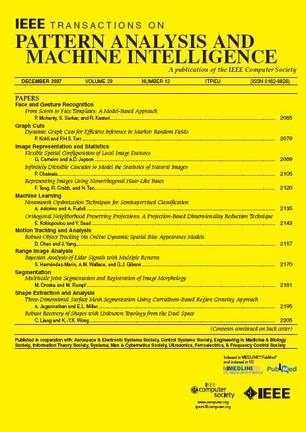无源跨域少镜头学习的分步分布对齐风格提示调优。
IF 18.6
1区 计算机科学
Q1 COMPUTER SCIENCE, ARTIFICIAL INTELLIGENCE
IEEE Transactions on Pattern Analysis and Machine Intelligence
Pub Date : 2025-09-16
DOI:10.1109/tpami.2025.3610039
引用次数: 0
摘要
现有的跨域少射学习(cross-domain few-shot learning, CDFSL)方法在源域开发训练策略以增强模型可移植性,但由于其源域和训练策略不可访问,在大规模预训练模型(LMs)中的应用面临挑战。此外,专门针对CDFSL对lm进行微调需要大量的计算资源,这限制了它们的实用性。因此,本文研究无源CDFSL (SF-CDFSL)问题,仅使用预训练模型和少量目标样本,不需要源数据或训练策略,即可解决目标域的few-shot learning (FSL)任务。然而,源数据的不可访问性阻碍了显式地减少源和目标之间的域间隙。为了解决这一挑战,本文提出了一种新的方法,即逐步分布对齐风格提示调优(StepSPT),从预测分布优化的角度隐式缩小域差距。StepSPT最初提出了一个样式提示,调整目标样本以反映预期的分布。此外,StepSPT通过探索双阶段优化过程(外部和内部过程)来调整样式提示和分类器。在外部过程中,通过将预测分布优化问题分解为多步分布对齐问题,引入分步分布对齐策略对所提出的样式提示进行调整。在内部过程中,分类器通过标准交叉熵损失进行更新。对5个数据集的评估表明,StepSPT优于现有的基于提示调优的方法和最先进的方法(SOTAs)。此外,消融研究和性能分析强调了StepSPT的有效性。该代码将在https://github.com/xuhuali-mxj/StepSPT上公开。本文章由计算机程序翻译,如有差异,请以英文原文为准。
Step-wise Distribution-aligned Style Prompt Tuning for Source-Free Cross-domain Few-shot Learning.
Existing cross-domain few-shot learning (CDFSL) methods, which develop training strategies in the source domain to enhance model transferability, face challenges when applied to large-scale pre-trained models (LMs), as their source domains and training strategies are not accessible. Besides, fine-tuning LMs specifically for CDFSL requires substantial computational resources, which limits their practicality. Therefore, this paper investigates the source-free CDFSL (SF-CDFSL) problem to solve the few-shot learning (FSL) task in target domain using only a pre-trained model and a few target samples, without requiring source data or training strategies. However, the inaccessibility of source data prevents explicitly reducing the domain gaps between the source and target. To tackle this challenge, this paper proposes a novel approach, Step-wise Distribution-aligned Style Prompt Tuning (StepSPT), to implicitly narrow the domain gaps from the perspective of prediction distribution optimization. StepSPT initially proposes a style prompt that adjusts the target samples to mirror the expected distribution. Furthermore, StepSPT tunes the style prompt and classifier by exploring a dual-phase optimization process (external and internal processes). In the external process, a step-wise distribution alignment strategy is introduced to tune the proposed style prompt by factorizing the prediction distribution optimization problem into the multi-step distribution alignment problem. In the internal process, the classifier is updated via standard cross-entropy loss. Evaluation on 5 datasets illustrates the superiority of StepSPT over existing prompt tuning-based methods and state-of-the-art methods (SOTAs). Furthermore, ablation studies and performance analyzes highlight the efficacy of StepSPT. The code will be made public at https://github.com/xuhuali-mxj/StepSPT.
求助全文
通过发布文献求助,成功后即可免费获取论文全文。
去求助
来源期刊
CiteScore
28.40
自引率
3.00%
发文量
885
审稿时长
8.5 months
期刊介绍:
The IEEE Transactions on Pattern Analysis and Machine Intelligence publishes articles on all traditional areas of computer vision and image understanding, all traditional areas of pattern analysis and recognition, and selected areas of machine intelligence, with a particular emphasis on machine learning for pattern analysis. Areas such as techniques for visual search, document and handwriting analysis, medical image analysis, video and image sequence analysis, content-based retrieval of image and video, face and gesture recognition and relevant specialized hardware and/or software architectures are also covered.

 求助内容:
求助内容: 应助结果提醒方式:
应助结果提醒方式:


